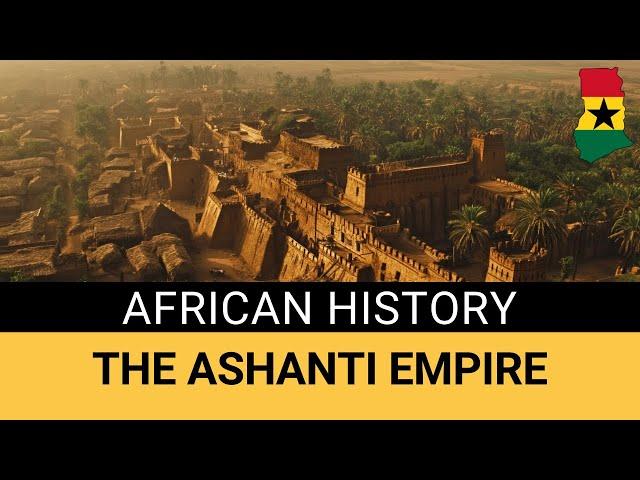table {
width: 100%;
border-collapse: collapse;
margin: 25px 0;
font-size: 14px;
table-layout: fixed;
}
th, td {
border: 1px solid #ddd;
text-align: left;
padding: 8px;
}
th {
background-color: #f2f2f2;
}
Unveiling the Golden Legacy: Exploring the Majestic Ashanti Empire in Ghana
Table of Contents
- 1 Unveiling the Golden Legacy: Exploring the Majestic Ashanti Empire in Ghana
- 1.1 Introduction
- 1.2 The Golden Stool: Symbol of Royal Authority
- 1.3 The Ashanti Confederacy: A Model of Governance
- 1.4 Military Prowess and Expansion
- 1.5 Gold and Trade: Pillars of Economy
- 1.6 Cultural Heritage and Legacy
- 1.7 Benefits of Exploring the Ashanti Empire
- 1.8 Practical Tips for Exploring the Ashanti Empire
- 1.9 Case Study: The Golden Stool Controversy
- 1.10 Conclusion
Meta Title: Dive into the Glorious Past: Exploring the Ashanti Empire, Ghana’s Golden Legacy
Meta Description: Embark on an enthralling journey into the heart of Ghana, where the Ashanti Empire onc reigned supreme. Discover their rich history,cultural heritage,and enduring legacy that continues to captivate the world.
Introduction
Nestled in the verdant heart of West Africa lies Ghana, a nation teeming with rich cultural history and ancient civilizations. Among thes,the Ashanti Empire stands out as a beacon of power,prosperity,and profound influence. With its origins in the 17th century, the empire grew to encompass a vast territory, leaving an indelible mark on the region’s history, culture, and society.
Central to the Ashanti identity is the Golden Stool, a sacred object believed to embody the soul of the nation. According to legend, the stool descended from the heavens and became the seat of the Ashanti king, the Asantehene. It represents the divine right to rule and is revered as a symbol of unity, strength, and tradition.
The Ashanti Confederacy: A Model of Governance
The Ashanti Empire was not a centralized monarchy but rather a confederacy of independent states, each with its own leader. These states were united under the Asantehene, who served as the paramount ruler and arbiter. This decentralized system allowed for versatility, autonomy, and efficient administration.
Military Prowess and Expansion
The Ashanti Empire was renowned for its military prowess.Its highly organized army, armed with refined weapons, conquered vast territories and established dominance over neighboring regions.Their military strategies and tactics influenced warfare in West Africa for centuries.
Gold and Trade: Pillars of Economy
Gold was the lifeblood of the Ashanti economy.The empire controlled a meaningful portion of the gold trade in West africa, amassing vast wealth and establishing trade routes that spanned the continent. Other critically important commodities included ivory, kola nuts, and slaves.
Cultural Heritage and Legacy
Beyond its political and economic accomplishments, the Ashanti Empire left a lasting legacy in the form of its vibrant culture.Their intricate goldsmithing, exquisite textiles, and elaborate festivals continue to be celebrated and admired today. Their unique architectural style, exemplified by their iconic mud-walled houses, showcases their ingenuity and artistic expression.
Benefits of Exploring the Ashanti Empire
Exploring the Ashanti Empire offers a multitude of benefits:
- Past Insight: Gain a deep understanding of one of Africa’s most influential pre-colonial empires.
- Cultural Enrichment: Immerse yourself in a rich and vibrant culture, experiencing conventional ceremonies, music, and art.
- Economic Awareness: Learn about the importance of trade and commerce in the development of civilizations.
- Educational Value: Enhance your knowledge of African history, geography, and cultural diversity.
Practical Tips for Exploring the Ashanti Empire
- Visit the Ashanti Cultural Center: in Kumasi, the former capital of the empire, to delve into its history and cultural practices.
- Attend the Akwasidae Festival: This annual festival celebrates the Asantehene and showcases traditional dances, drumming, and rituals.
- explore the Ashanti villages: Immerse yourself in local life and witness traditional architecture, crafts, and daily routines.
- Visit the Kumasi Fort: This former British fort played a significant role in the empire’s decline and offers insights into colonial history.
Case Study: The Golden Stool Controversy
in 1900, British forces invaded Kumasi and seized the Golden Stool. This act sparked the War of the Golden Stool, a fierce resistance movement that symbolized the Ashanti people’s determination to preserve their cultural heritage.
Conclusion
the Ashanti empire stands as a testament to the ingenuity, power, and resilience of the Ghanaian people. Its legacy continues to shape the nation’s identity and inspire generations. Exploring the empire’s rich history, cultural heritage, and economic achievements provides invaluable insights into the complexities of African civilizations. Whether you’re a history buff, a culture enthusiast, or an aspiring traveler, a journey into the heart of the Ashanti Empire promises an unforgettable and enriching experience.

